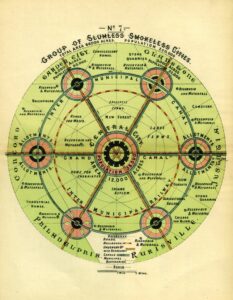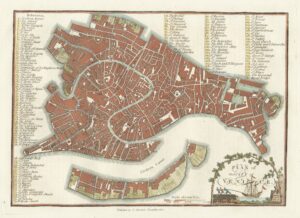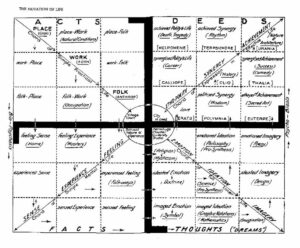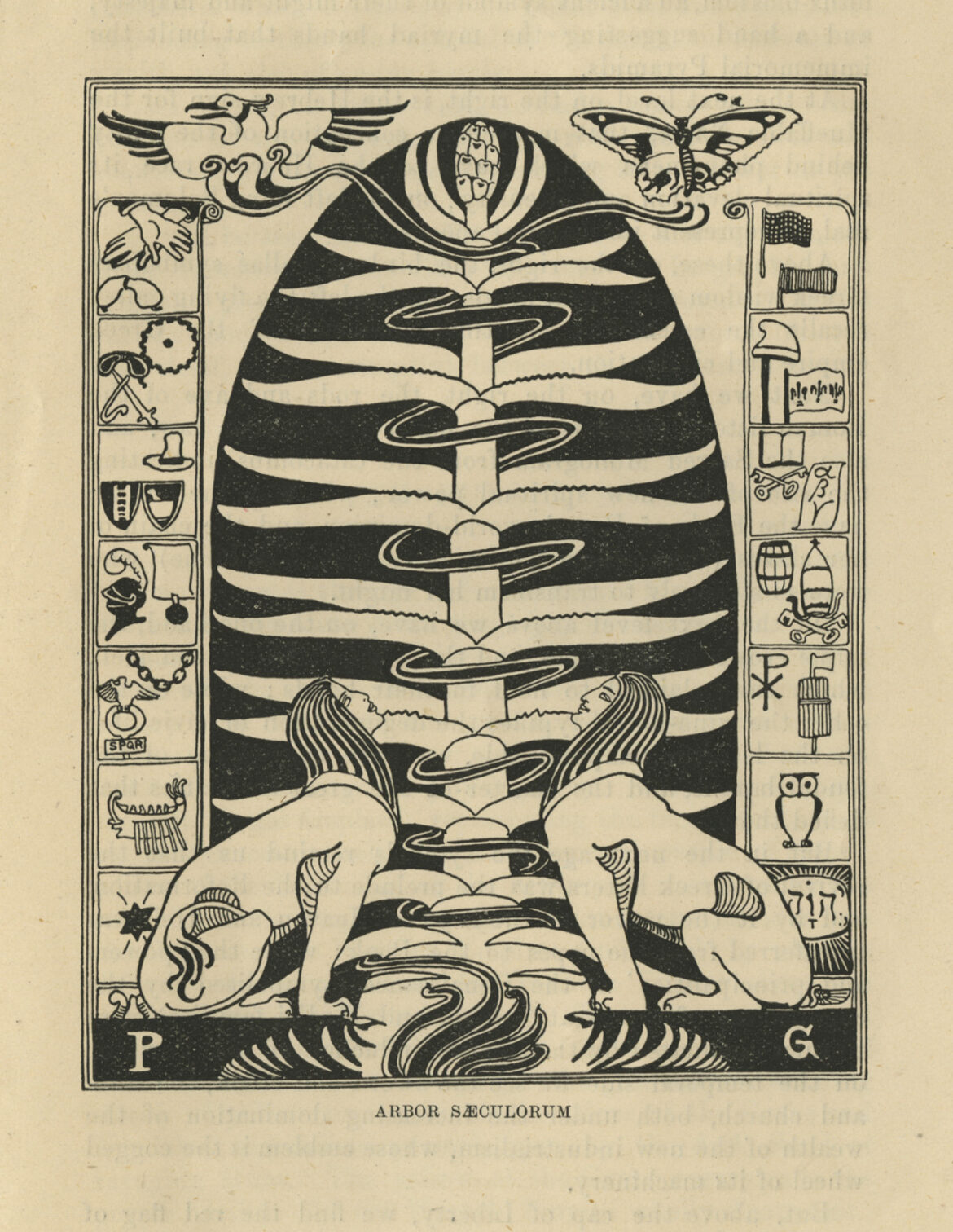The article aims to establish a relationship between the various Urban Design theories. Every theory has a different approach towards the built environment and public space. Being these theories situated at different time intervals and period in the history, they had a different implication on the cities which were being constructed. Some of the theories such as the functional theories had a very modernist top-down approach whereas others such as the various social theories have a comparatively bottom-up approach. Post-modernism brought about a wave of modernist ideas that were implemented in the cities without looking at the context. Such planned cities went under a massive decline. So, looking at such examples and theories in further understanding and synthesising the same with respect to the Indian context. By the end of the paper, a way forward for the future of Urban Design will be discussed on how and what we should focus on for the further developing cities and towns. Urban Design theories let us understand the timeline of how the practice began and how we started designing cities.
Beginning with the Functional theory, It marked with the idea of Garden cities which considered nature and the environment in it. Howard’s approach is much functional in terms of the quantification and drawing up laws and regulations that he did in the garden city model. His approach turned out to be beneficial for just one division of the city, who can afford such neighbourhoods. The city is not just about providing housing or transportation, it’s also about safety and “justice” which ultimately narrows down in today’s time to equity and equality amongst the stakeholders and users of the city,which I think Howard failed to incorporate or think about in his theory. He focused on the importance of uniform and organised settlement patterns which somehow neglects the idea and functioning of a free-market society. But, I liked the idea of cooperative community which was very important in the 19th century when the

Garden City Concept by Sir Ebenzer Howard
cities were going under a rapid modernisation phase. However, it could have worked better if thought or idea of subsidised housing for the economically poor would have put in.
Coming to Christopher Alexander who puts the art of city building in a more poetic way- “But as things are, we have so far beset ourselves with rules, and concepts, and ideas of what must be done to make a building or a town alive, that we have become afraid of what will happen naturally, and convinced that we must work within a “system” with “methods” since without them our surrounding will come tumbling down in chaos.” Yes, it is true that we have bounded ourselves with rules and limitations in the process of creating or developing something, but these rules exist with respect to the factors that affect the city’s growth or development. He however mentions correctly that the timeless way of building anything is about learning the discipline and then shedding it. And here, the discipline that we need to follow is to conserve and respect nature because of which we have been able to cease to exist individually. We, in the process of development and modernisation, are destroying nature which ultimately is affecting us backward in the form of Climate change. If you respect nature, nature will respect you and that is the discipline that is followed. This brings us to another link-up theory, which is the Image theory. We are constantly creating architectural wonders and beautiful gardens for aesthetics. In the process of creating these aesthetics, we have forgotten the real essence of why have we been building these cities.

Venice : a city made through the functional approach
Taking an example of Venice, which was made through a very functional approach and began to form as the main Port-land, but now it has become an image for the purpose of tourist attraction. The functionality of the city has been overpowered by the imagery of it. One of the reasons being, this image of the most beautiful city in the world is helping it to generate the economy in the city.
Why do we make a city? What is the purpose of making a city?
Social theory answers these questions in such a way that- a city is supposed to reflect the most vital condition of urbanism. It should be a system that can comprehendingly and comprehensively allow for multi-reactions. Cities today revolve around the idea of capitalism and urbanization. However, there are more aspects to fall back on. There are several other factors such as social inequality, crime, and social problems that need to be considered and well thought of. As David Harvey mentioned in the condition of post-modernity: “The life in the rural areas has tranquility but is dull, while the life in the city has variety and excitement but topped with fear of freedom.” I agree, that we live in cities of fear. And fear here ranges to a variety of conditions. You cannot live in a modern city without the fear of getting lost or being robbed.

The notation of life by Sir Patrick Geddes
In my opinion, I like the idea of Socialtheories on how they considered sociology as the main branch of evolution. We need to understand that our behaviour has a lot to do with how we perceive and want to see things around us be. Like the town-city diagram which was proposed by Sir Patrick Geddes, we as humans interact with subjects ranging from contemporary psychology and politics to sociology, arts, and beyond. There has to be a consideration of the environment and ecology in everything that we design. This was however reflected in Ebenezer Howard’s Garden cities model. The industrial revolution which happened in India did not take into account the environment and exploiting nature. It is when Geddes anticipated environmentalism, which was then taken ahead by Ian McHarg. Urban design should start and end with people’s needs. It has to serve people’s living conditions in towns and cities. And what better than the sociological approach to understanding their basic livelihood and settlement patterns.
In the Indian context, I don’t think we need a very new theory to plan or put the cities in order. Going back to the earlier civilizations and towns, we had very functional indigenous architecture and urban forms where we have used the local materials as the building elements, gave a directive response to climate, have had multiple uses of public space, and a very unique and small grain character of streets. In the housing areas, there was no need to create wide dusty streets, as the indigenous Indian tradition was way wiser with its use of narrow lanes which ultimately opened up into very pleasant squares. Each of these squares has a shade-bearing tree. The lanes however narrow would have shade and a quiet environment, which left the building areas with large enough enclosures to make courtyards and gardens. A courtyard was the most central element of a house. It was blessed with a shrine preserving the traditional and spiritual values of an Indian household. There was a sense of spirituality with the banyan trees, which were planted in the gardens and open spaces which not only used to give shade in the harsh sunny afternoons but also allowed a multi-functional usage of the space under it. We have had some old cultural values that themselves were a major aspect for city planning, and how buildings should be oriented.
The modern way of city planning has nearly destroyed our cultural values in multiple ways. For example, if we see the plan of New Delhi, It was completely a personification of British power, which was built extravagantly on the principles of luxurious Garden city. The scale of the road layout and the size of the plots for each bungalow far exceeded any English Prototype at that time. It significantly shows the symbolic impression of the strength of British rule. Comparing this to the fabric of Old Delhi, significantly shows the traditional Indian fabric vs the modernist fabric. Similar is the case of Ahmedabad, where on the one side of the river is the old city fabric with traditional pol houses, and on the other hand, we have new Ahmedabad with high-rise residential and commercial complexes on the other side.We have been idolizing the modern way of living and to achieve that we have started accepting the modern ways of planning. The first-ever industrial city which was built by India’s steel magnate and entrepreneur, Mr.Tata was quite extraordinary in an Indian context. Initially, the entire street pattern was laid out by a Pittsburg engineer applying a gridiron street pattern which again was a direct imitation of an American industrial city. In the quest of accepting and applying modern lifestyles, we have started miming our own cultural and traditional values. Vaastu earlier was every important aspect before designing or constructing a house. Nowadays, there are very few people who consider the Vastu-shastra. Majorly look for aesthetics in a house or neighbourhood before settling down.
If we go back to looking at the history and Hindu culture, the discussions about the importance of household gods, the sacredness of the home, and the role of women in Indian society are some of the extremely delicate subjects. Women were seen as the agents of cultural transmission in India. It is the women after all who preserve, conserve and intact the old religious observances, which is why the Indian garden is considered above all due to the holiness of it. In the day, a woman’s reverence begins with the ‘pradakshina’ about the sacred Tulsi, which is generally planted on an altar in the courtyard of the house. It has a purpose of why it is built in the center of the courtyard. It generates and renews the energy for practical achievements, purifies the air, and is a great spiritual act to Indian households. Indian historical planning included and encouraged courtyard houses so that a lot of household activities can happen in a semi-open/open central space inside the house. Even the pol houses of Ahmedabad had a central courtyard. Now with the newer and modern construction strategies, these activities are getting eliminated. The modern way of planning has led to the destruction of our cultural values which were scientifically beneficial for the Indian context and climate. Patrick Geddes in the 1920s traveled to the south of India and discovered the temple cities. His aim was to look for indigenous customs and traditions which would ultimately be revived and would have been made to serve modern purposes. And after his discovery, he got convinced that the traditions of a civic consciousness can be the model that would work in India. On the domestic and communal traditions of South India, he wrote: “There almost every house has an orchard, which receives the sewage of the house that is the mainstay of a profitable vegetable garden. Every street is lined with shady trees and its with guaranteed by the periodical car procession. every village has its central park, tank, and temple. The tanks are sacred, the trees are sacred, and the temple; is covered by dense rich foliage, which perhaps gives the name and sacred distinction to the village. It is from the temple that their radiates the impulse which uplifts every house so that each may become itself the temple of God.” Therefore, he stressed bringing up the old values against the modern planning issues. He is one such modern pioneer of town and country planning who is well studied and documented by not often talked about. Being a British himself, he is the one who understands the values and cultures attached to Indian households and brought about a rebel against modern planning in India. Whom we are designing for belonging to the Indian way of life and the plans and ideas which we superimpose are based upon the European and American way of living, which is completely a misfit in the context, and that is the reason why we have been facing the decline of a lot of cities. We need to change our planning policies and design theories and in such a way that they fit the Indian culture, climate and context.
In my opinion, for the future of Urban Design, we need to take a step back and understand the requirements and capacities of our cities before designing or superimposing a plan on it. And the most important factor that we need to consider is the problem of “Climate Change”. It has to be one of the most important things that we’ll have to consider. Since the time of Industrialization, our cities have been non-stop running towards the aim of being ideal without us considering the environment. We’ve been destroying nature and replacing it with concrete. We’re considering the economy over ecology.
Being sustainable and responding to climate are the two ways of building ahead, whereas, for our cities, we need to bring back the typology of narrow lanes with trees and courtyard houses. We need to follow a more sociological and communal approach towards development. We will have to consider the ideal Indian household situation while locating the residential and commercial zones in the cities. The people whom we design for have to be put in the center of the planning and designing process. Only then we will be able to solve the issues of inequality, crime, vandalism, tension, and
stress. There is an urgent requirement of developing a critical relationship between the social relationship and the spatial form, with regards to the existing environment for the Indian context. The areas, where these have been taken into consideration have resulted in comfort, space, convenience, trees, and gardens which ultimately constituted the elements of a good environment. The theory of Garden cities incorporated the environmental factor along with spatial form and pattern, and the social theories by Geddes, Parsons, Mumford, Weber addressed the social concerns. Rural India is the best example of how our cities should function. We don’t have to slice through the existing urban forms to create something extremely habitable and ideal. We can develop over existing context, and preserve our heritage and cultural values.
Also read : https://planningtank.com/planning-theory/garden-city-movement


